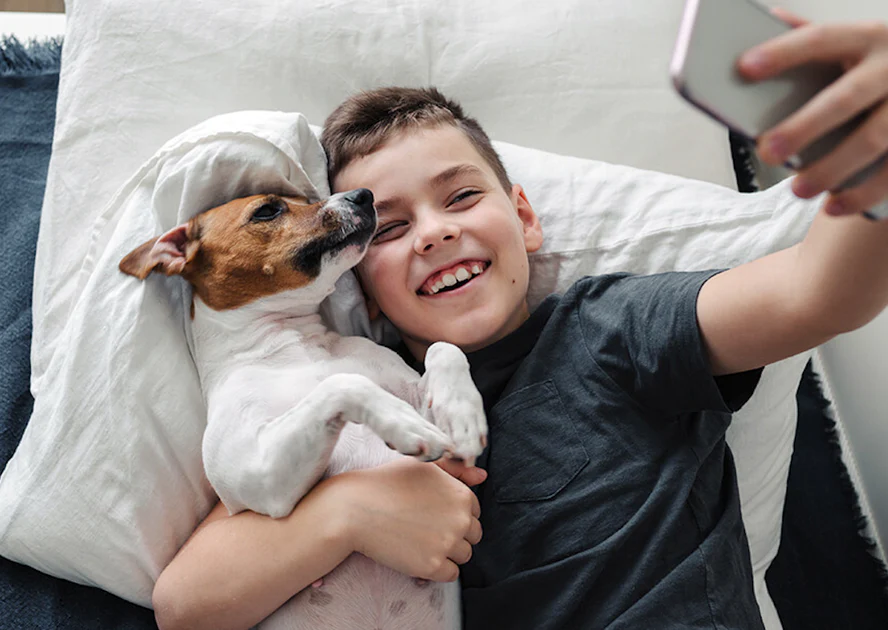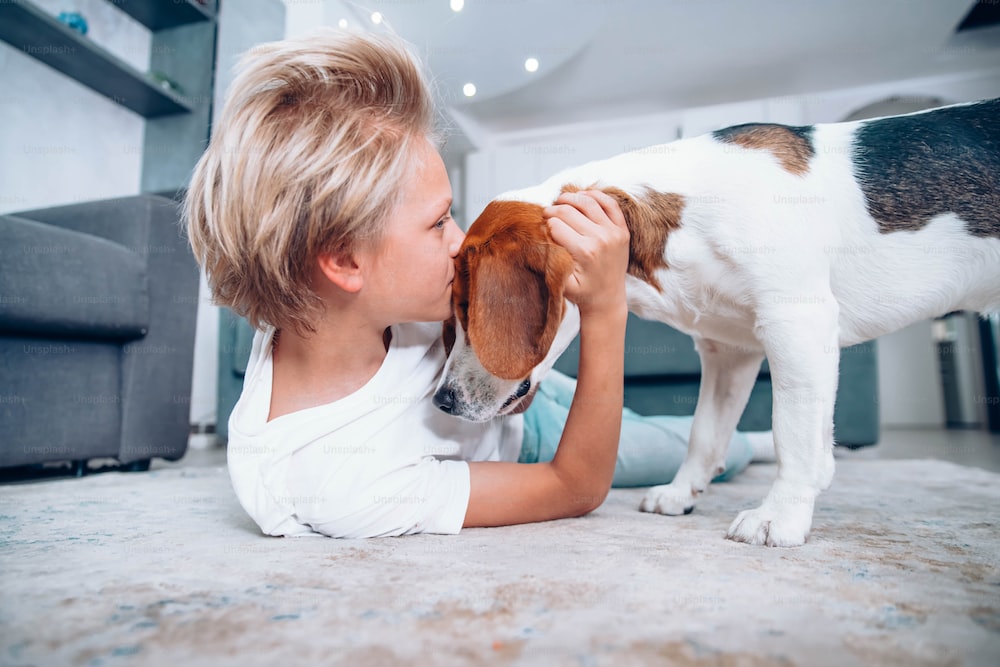Families with both dogs and children often face unique challenges when it comes to managing their household. While dogs can bring joy, companionship, and numerous benefits to a family, they also require proper training, socialization, and management to ensure the safety and well-being of both the children and the dog. In this article, we will discuss some common challenges faced by families with dogs and children and provide practical solutions to overcome them.

- Safety Concerns: One of the foremost challenges is ensuring the safety of both the children and the dog. Young children may not understand how to properly interact with dogs, and dogs, especially if they are not accustomed to being around children, may become fearful or aggressive.
Solution: Supervision and Education
- Supervision is vital when children and dogs interact. An adult should always be present to monitor their interactions and intervene if necessary.
- Teach children how to approach and interact with dogs gently and calmly. They should learn to avoid pulling on the dog’s ears or tail, hugging tightly, or startling the dog.
- Educate children about a dog’s body language and signs of discomfort. This will help them recognize when a dog is stressed or anxious and know when to give the dog space.
- Teach children never to approach or bother a dog when it is eating, sleeping, or caring for puppies.
- Dog Training: Well-trained dogs are essential for a harmonious family dynamic. However, training a dog requires time, consistency, and patience. Without proper training, dogs may exhibit undesirable behaviors such as jumping, nipping, or excessive barking, which can be challenging for parents with young children.
Solution: Positive Reinforcement Training
- Enroll the dog in obedience classes or hire a professional dog trainer who uses positive reinforcement methods. Positive reinforcement involves rewarding desired behaviors with treats or praise, encouraging the dog to repeat those behaviors.
- Involve the entire family in training sessions, allowing children to participate in basic commands under adult supervision. This fosters a bond between the child and the dog and helps the dog generalize obedience to all family members.
- Teach children to use positive reinforcement techniques when interacting with the dog, such as rewarding the dog for sitting or lying down on command.
- Resource Guarding: Dogs may exhibit resource guarding behavior, where they become protective of their food, toys, or personal space. This behavior can pose a risk to children, as they may unknowingly trigger the dog’s guarding instincts.
Solution: Management and Training
- Implement management strategies to prevent access to resources that trigger guarding behavior. For example, separate the dog and children during meal times and provide a designated space for the dog’s toys, away from children.
- Teach children to respect the dog’s space and never approach or try to take anything away from the dog without adult supervision.
- Consult with a professional dog trainer or behaviorist to address resource guarding issues. They can provide appropriate training techniques to modify the dog’s behavior and reduce the guarding tendencies.

- Hygiene and Health: Maintaining proper hygiene and ensuring the health of both the dog and the children is crucial. Dogs can carry germs and parasites that may harm children, and children may unknowingly expose dogs to harmful substances or engage in unsafe behaviors.
Solution: Hygiene Education and Routine Veterinary Care
- Teach children the importance of regular handwashing after handling the dog, especially before meals or after playing outside. This helps prevent the transmission of germs and reduces the risk of zoonotic diseases.
- Keep dog food and water bowls clean and separate from the children’s eating areas.
- Ensure the dog receives routine veterinary care, including vaccinations, regular check-ups, and parasite prevention. Consult with a veterinarian regarding appropriate flea, tick, and worming treatments for the dog.
- Teach children to avoid giving the dog human food, as certain foods can be toxic to dogs. Supervise their interactions to prevent accidental ingestion of harmful substances.
- Time and Attention: Balancing the needs of both children and dogs can be challenging, as both require time, attention, and care. Neglecting either can lead to behavioral issues, anxiety, or feelings of resentment.
Solution: Establishing Routines and Quality Time
- Create a schedule that prioritizes time for both children and dogs. Set aside dedicated playtime, walks, and training sessions for the dog to ensure they receive adequate exercise and mental stimulation.
- Encourage children to participate in dog-related activities, such as feeding, grooming, or interactive play. This fosters a sense of responsibility and strengthens the bond between the child and the dog.
- Allocate quality one-on-one time for each child and the dog to strengthen their individual relationships. This can include cuddling, reading together, or engaging in interactive games.

Families with both dogs and children can face challenges, but with proper management, training, and education, these challenges can be overcome. By prioritizing safety, providing training for both children and dogs, implementing hygiene practices, and allocating quality time, families can create a harmonious and happy environment for everyone. It is important to remember that every family is unique, and solutions may vary depending on the specific dynamics and needs of the family and the dog. Seeking guidance from professionals, such as dog trainers or veterinarians, can provide valuable insights and support in addressing specific challenges. With dedication, patience, and love, families can create a loving and safe space where dogs and children can thrive together.
